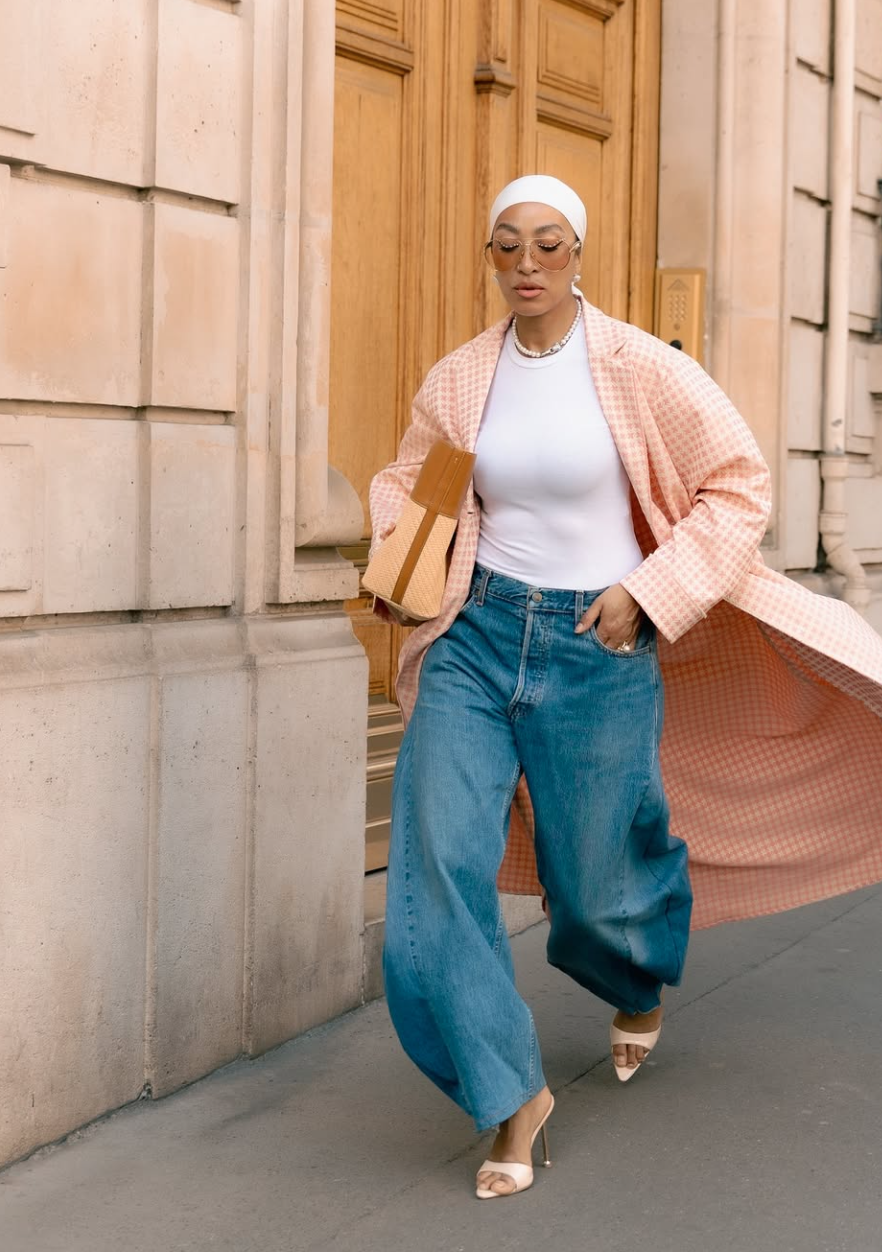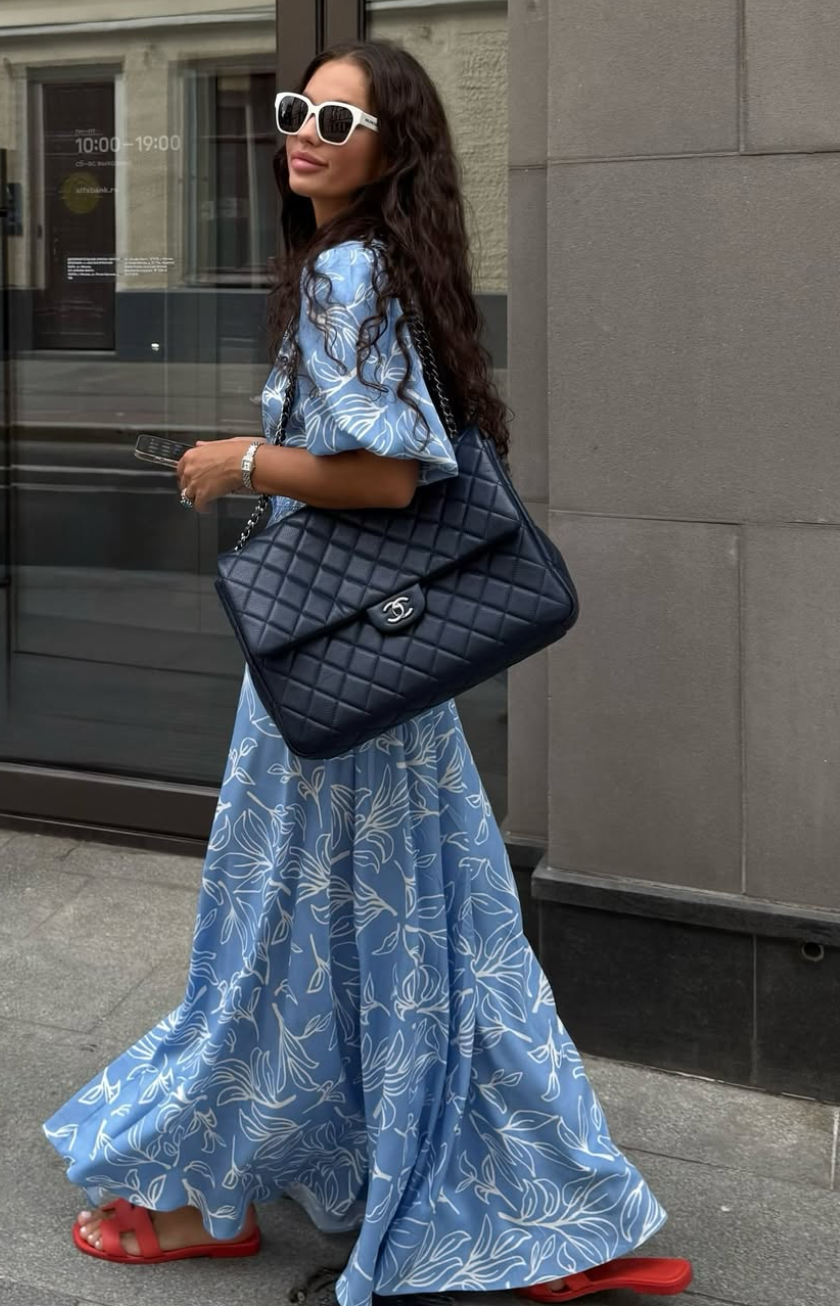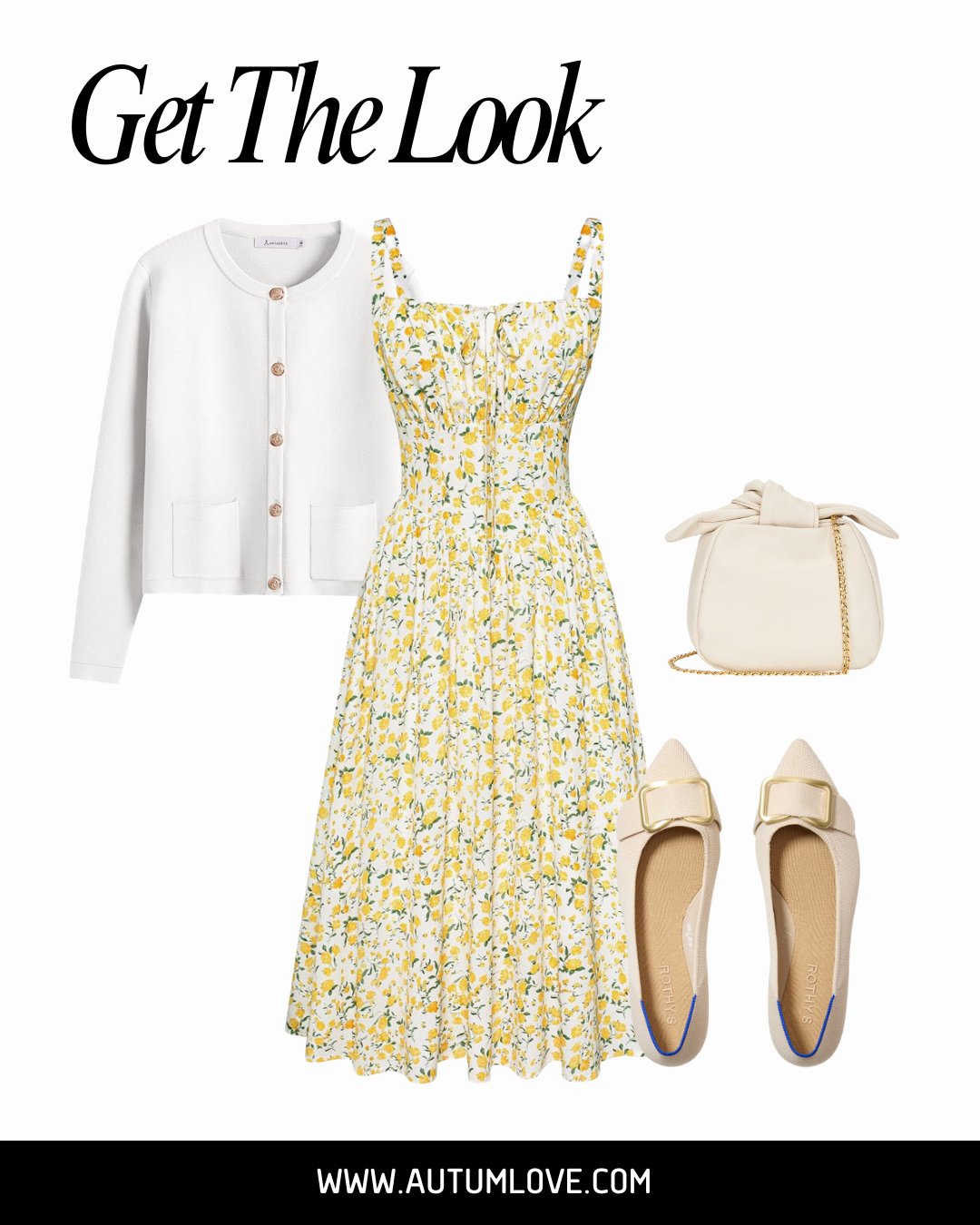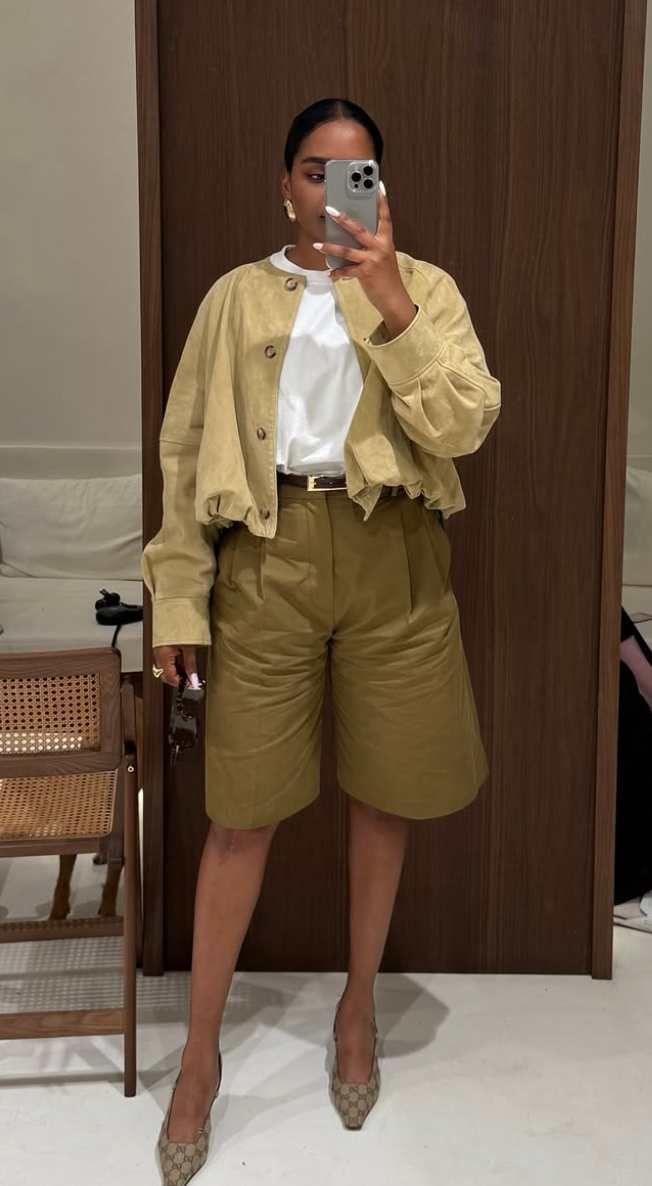The Year Round Layering Guide for When You Don’t Know What to Wear
photo credit:@yacinelusaku
Layering sounds simple—until you try it. One minute you’re throwing on a cardigan “just in case,” and the next thing you know, you’re sweating through brunch in a coat that looked cute on Pinterest but felt like punishment IRL.
Been there. And that’s exactly why this guide exists.
The truth is, layering isn’t just about staying warm (or cool). It’s about making your outfit feel finished intentional, pulled together, and most importantly, still like you. But when it goes wrong? It goes really wrong. Bulky layers, awkward lengths, random fabrics that just don’t play well together it’s a mess.
This guide walks you through how to layer by season, using real outfit ideas and practical tips you can actually use. No styling degree required. Just everyday pieces, styled smart.
If you’re in your 30s and trying to build a closet that works all year—not just when the weather cooperates—download the free guide: 30 Wardrobe Essentials for Women in Their 30s. It pairs perfectly with this post (and your real life).
The Layering Formula: Style Rules That Work in Every Season
Photo Credit:@lemonde2siam
Before we get into trenches and turtlenecks, let’s get one thing straight: good layering has less to do with temperature and more to do with technique.
It’s not about piling on pieces until you're warm—it’s about creating a look that feels intentional, put together, and wearable as a whole. Think of it like a recipe. You want balance, contrast, and structure—not just everything in the fridge thrown on top of each other.
Here’s the formula that works no matter what season you’re in:
1. Start with Fitted Base Layers
If the layer closest to your body is bulky, the whole outfit falls apart. Stick to fitted tanks, tees, or bodysuits that create a smooth starting point. This keeps the silhouette clean and lets your outer layers shine.
2. Mix Textures for Contrast
Layering isn’t just about stacking clothing—it’s about building visual interest. Pair soft with structured, matte with shine, knit with woven. Texture is what makes neutrals look expensive and basics feel styled.
Example: A cotton tee under a leather jacket. A satin slip under a chunky knit. A waffle-knit cardigan over a slinky tank. Contrast keeps it chic.
Photo Credit:@tylauren
3. Keep the Volume in One Area Only
The rule is simple: if you’re going oversized on top, keep it streamlined on bottom—and vice versa. You want balance, not bulk.
Try this:
Oversized blazer + fitted turtleneck + straight-leg pants
Flowy midi skirt + cropped cardigan + slim tank underneath
4. Use Color or Pattern in One Layer at a Time
Layering is the time to be strategic, not chaotic. Let one piece take the spotlight. If you’re layering a printed blouse, keep the jacket or cardigan solid. If your coat is a bold color, keep the rest soft and clean.
This rule saves you from looking like your outfit is having an identity crisis.
Photo Credit:@lilyakaripova
5. Mind Your Hemlines
You know that weird visual weight when a long top peeks out awkwardly under a short coat? That’s what we’re avoiding.
Keep your lengths intentional:
Cropped over long = modern
Long over long = dramatic
Short over short = polished
Stacking too many mismatched lengths can ruin an otherwise great outfit.
| Fabric | Best For |
|---|---|
| Cotton | Breathable base layers |
| Modal | Lightweight, drapes well |
| Wool | Warmth without bulk (coats, knits) |
| Linen | Summer structure, breathable |
| Fleece | Cozy mid-layer, soft warmth |
| HeatTech | Invisible insulation (winter must) |
| Satin | Under knits for shine and movement |
How To Layer Your Outfits In The Spring
Photo Credit:@marinafilatovaaa
Spring is confusing. You wake up and it’s 50 degrees, but by lunch you’re sweating in the sun. This is when layering really earns its place—you need pieces you can peel off without ruining the outfit.
The goal? Layers that breathe. Think: light jackets, open knits, cropped cardigans, and breathable base layers that hold their shape and style even when worn solo.
What to Focus On
Transitional fabrics: cotton, linen blends, light denim
Strategic warmth: layers that can come off without throwing off the whole outfit
Color cohesion: when in doubt, stick to neutrals + one pop of color
Outfit Idea 1: Easy & Elevated
Formula: Tank + cotton button-down + straight-leg jeans + loafers
Why it works: You can tie the shirt at the waist, wear it open, or layer it under a trench if the temp drops.
Try these:
White Cotton Button-Down ($26) – breathable, structured, not stiff
Straight-Leg High Waist Jeans ($39) – roomy enough for layers, polished enough for work
Neutral Loafers ($159) – ideal with cropped pants and layered looks
Outfit Idea 2: Dress It Up (Without Freezing)
Formula: Midi dress + cropped cardigan + lightweight trench + flats
Why it works: The trench adds polish and coverage. The cropped cardigan keeps your shape visible.
Try these:
Cropped Knit Cardigan ($43) – perfectly hits at the waist
Lightweight Trench Coat ($70) – a layering MVP for spring
Midi Dress with Short Sleeves ($49) – easy to layer and not too bulky under coats
Outfit Idea 3: Chill Morning, Warm Afternoon
Formula: Fitted long sleeve tee + sleeveless vest + wide-leg trousers
Why it works: You can lose the vest by noon and still look styled.
Try these:
Modal Long-Sleeve Tee ($14) – light, stretchy, breathable
Sweater Vest ($33) – adds texture without adding heat
Wide-Leg Linen Pants ($32) – structured but breezy
How To Layer Your Outfits In The Summer
photo credit:@jennybvby
Let’s get one thing clear, Yes, you can layer in summer. No, it’s not about adding warmth it’s about using shape, texture, and coverage to make your outfits feel styled and intentional. Think, breezy linen shirts, open knits, structured short-sleeve blazers, and sheer layers that add interest without adding heat.
You’re layering for structure, not insulation.
What to Focus On
Breathable fabrics: cotton, linen, mesh, open crochet
Loose silhouettes that still look elevated
Layering as styling—protect your skin from the sun, transition indoors with A/C, and give your outfit dimension
Outfit Idea 1: Easy + Airy
Formula: Ribbed tank + linen shirt + wide-leg shorts + slides
Why it works: The open shirt gives you movement and coverage, but won’t trap heat. Wear it open, tied, or even tucked halfway.
Try these:
White Linen Button-Down Shirt ($26) – lightweight, polished, and breezy
High-Waisted Pull-On Shorts ($24) – a warm-weather alternative to jeans
Slim Ribbed Tank ($9) – fitted base layer that plays well with everything
Outfit Idea 2: Dress + Structure
Formula: Slip dress + cropped blazer + strappy sandals
Why it works: You’re not adding warmth—you’re adding shape. The cropped blazer sharpens the whole look and gives the slip dress instant polish.
Try these:
Sleeveless Slip Midi Dress ($23) – soft, light, and layers like a dream
Short-Sleeve Cropped Blazer ($40) – lightweight but structured enough to define your waist
Minimalist Sandals ($38) – keep it simple and chic
Outfit Idea 3: Chill and Sheer
Formula: Tank + open crochet top + lightweight pants
Why it works: Texture without weight. The crochet adds dimension, the pants keep airflow, and the whole look feels intentional—not sweaty.
Try these:
Open Crochet Knit Pullover ($29) – mesh-style and perfect for layering
Wide-Leg Gauze Pants ($33) – relaxed fit with a slightly tailored feel
Stretch Modal Tank ($24) – light enough to layer, strong enough to wear solo
How To Layer Your Outfits In The Fall
Photo Credit:@osullliv
Fall is the sweet spot for layering when it’s finally cool enough to add a third piece on purpose, but not cold enough to feel bundled. It’s all about playing with texture, structure, and rich color. Think chunky knits over silky dresses, blazers over turtlenecks, cardigans that feel like outerwear but wear like styling tools.
It’s the season when layering becomes the outfit.
What to Focus On
Texture mixing: knits, denim, faux leather, suiting
Structured layers that hold their shape (blazers, longline coats, waist-defining cardigans)
Layering under dresses and using accessories (scarves, hats, tights) to finish the look without overheating
Outfit Idea 1: Classic Meets Cozy
Formula: Turtleneck + sleeveless knit dress + longline cardigan + boots
Why it works: You get warmth without bulk, and the cardigan gives you movement. It’s cozy, but styled.
Try these:
Fitted Ribbed Turtleneck ($23) – ideal base layer with stretch
Knit Midi Tank Dress ($44) – sleeveless, so you can layer underneath and over
Open Front Longline Cardigan ($33) – drapey without looking sloppy
Outfit Idea 2: Tailored & Textured
Formula: Button-up shirt + crewneck sweater + oversized blazer + straight jeans
Why it works: Each layer adds shape. The button-up gives structure, the sweater adds weight, and the blazer finishes it off.
Try these:
Crisp White Button-Down ($24) – the fall base layer that still breathes
Crewneck Sweater ($24) – medium-weight knit that layers easily
Boyfriend Blazer ($49) – sharp enough for work, chill enough for errands
Outfit Idea 3: Romantic but Practical
Formula: Slip dress + ribbed turtleneck underneath + cropped jacket + loafers or boots
Why it works: Layering under the dress lets it work in cooler weather. A cropped jacket keeps the shape defined.
Try these:
Satin Slip Dress ($19) – perfect with a turtleneck or tee underneath
Faux Suede Cropped Jacket ($45) – adds shape and soft texture
Lug Sole Loafers ($54) – fall’s perfect in-between shoe
How To Layer Your Outfits In The Winter
Photo Credit @gen.tbh
Winter layering is where things can go very wrong—fast. It’s easy to end up looking like a shapeless marshmallow if you’re not careful. The goal here isn’t just staying warm (although yes, that matters)—it’s staying warm while still looking like you got dressed on purpose.
That’s where strategic layering comes in. We’re talking HeatTech, fleece-lined tights, midweight knits, and structured outerwear that creates shape instead of swallowing it.
What to Focus On
Invisible warmth: thermal long sleeves, leggings, fleece-lined base layers
Layering with purpose: each piece should either trap warmth or define the outfit
Outerwear that flatters—belting, structured shoulders, or clean lines that cinch or skim
Outfit Idea 1: Invisible Warmth, Visible Style
Formula: HeatTech top + knit pullover + belted wool coat + wide-leg trousers
Why it works: The thermal layer keeps you warm, the knit adds texture, and the coat defines your shape instead of hiding it.
Try these:
Uniqlo HeatTech Long Sleeve Top ($20) – base warmth without bulk
Chunky Crewneck Sweater ($39) – thick enough to layer over, soft enough to wear solo
Belted Wool Coat ($59) – classic, timeless, and warm
Outfit Idea 2: Cold-Weather Chic
Formula: Thermal leggings + knit midi dress + cropped puffer vest + tall boots
Why it works: The base layers are hidden, but the outfit looks styled. A puffer vest adds warmth without overwhelming the shape of the dress.
Try these:
Fleece-Lined Leggings ($44) – soft inside, smooth outside
Long-Sleeve Knit Dress ($45) – enough stretch to layer over leggings
Cropped Puffer Vest ($42) – adds shape and warmth without weight
Outfit Idea 3: Undercover Layers
Formula: Thermal base + hoodie + tailored coat + boots + oversized scarf
Why it works: The hoodie and coat combo gives street-style cool, while the thermal top underneath keeps you warm without adding puff.
Try these:
Basic Hoodie ($35) – cozy, not bulky
Wool-Blend Tailored Coat ($68) – structured enough to pull the whole look together
Oversized Blanket Scarf ($18) – for warmth and layering drama
Quick Outfit Formulas by Season
These are the throw-on-and-go combos that make layering feel less like a puzzle and more like second nature.
| Season | Layering Formula |
|---|---|
| Spring | Tank + button-up + midi skirt + loafers |
| Summer | Slip dress + linen shirt + flat sandals |
| Fall | Turtleneck + shacket + straight jeans + ankle boots |
| Winter | HeatTech tee + knit sweater + wool coat + tall boots |
Pro tip: Screenshot this, pin it, or save it in your Notes app as your go-to layering cheat sheet.
20 Layering Essentials For Women
These are the real MVPs. The base layers, add-ons, and third pieces that help your closet work harder—no matter the season.
Base Layers (Fitted and Flexible)
Slim Ribbed Tank ($9) – Perfect under cardigans, jackets, or on its own in summer.
Modal Long-Sleeve Tee ($19) – Lightweight and stretchy enough for under layers.
HeatTech Long Sleeve ($29) – Invisible warmth when you need it.
Basic Stretch Tee ($19) – Soft, smooth, and ideal under sweaters or blazers.
Fleece-Lined Leggings ($34) – Warm base for dresses, tunics, or oversized knits.
Mid-Layers (Cardigans, Vests, and Knits)
Open Knit Sweater ($36) – Adds texture in spring or fall without being heavy.
Cropped Button-Up Cardigan ($28) – A flattering piece that layers over dresses or tanks.
Sweater Vest ($24) – Use it over button-downs or tees for instant polish.
Crewneck Pullover Sweater ($38) – Medium weight, easy to tuck or layer over shirts.
Hoodie Sweatshirt ($36) – Casual but layered right, it works for travel or errands.
Third Pieces (The Outer Layer Moment)
White Linen Button-Down ($14) – Light enough for summer, classic enough for fall.
Lightweight Trench Coat ($60) – A layering staple that dresses up any look.
Oversized Boyfriend Blazer ($58) – Great over fitted layers or dresses.
Longline Cardigan ($39) – Ideal for transitional weather when you don’t need a coat.
Cropped Puffer Vest ($42) – Adds warmth and contrast in winter without bulk.
Flexible Bottoms (That Layer Up or Down)
Wide-Leg Linen Pants ($33) – Breezy for summer but look great under fall knits.
Straight-Leg Jeans ($41) – Easy to tuck layers into or wear with ankle boots.
High-Waisted Shorts ($28) – Wear with tanks, tees, or layer a shirt over them.
Knit Midi Skirt ($39) – Works with tights, boots, or layered under a trench.
Slip Dress ($30) – The layer-under, layer-over dream piece for all seasons.
FAQs About Layering Clothes (Without the Confusion)
-
Start with a fitted base layer—think a ribbed tank or slim long sleeve. Only one part of your outfit should carry volume (top or bottom), and balance it out with shape. A longline coat over a base and straight jeans? Chic. A big sweater, oversized jacket, and wide-leg pants? Probably too much.
-
Something fitted, soft, and stretchy. A modal long sleeve tee, a HeatTech top, or even a tank under a cardigan will give you warmth and structure without adding bulk. If it doesn’t feel good under a jacket, it’s not the right base.
-
Yes—just layer for style, not warmth. Think of linen shirts, open-knit tops, and short-sleeve blazers. Use your third piece (jacket or layer) as a way to add shape or color—not heat.
-
Look for pieces that work with the body, not against it:
Lightweight trench (spring/fall)
Linen or cotton-blend blazer (summer/fall)
Wool or belted coat (winter)
Cropped jackets to define shape over dresses
-
Three is the sweet spot: base + mid + outer. You want each layer to feel intentional. If your outfit can’t function when one layer comes off, it’s too dependent—and probably too much.
-
Use accessories and light textures. A sheer button-down, a belt over a dress, layered jewelry, or an open vest can all create depth without warmth. Structure = visual layering.
Creator Images used for editorial purposes only. All rights belong to their respective creators. We always link and give credit.





















